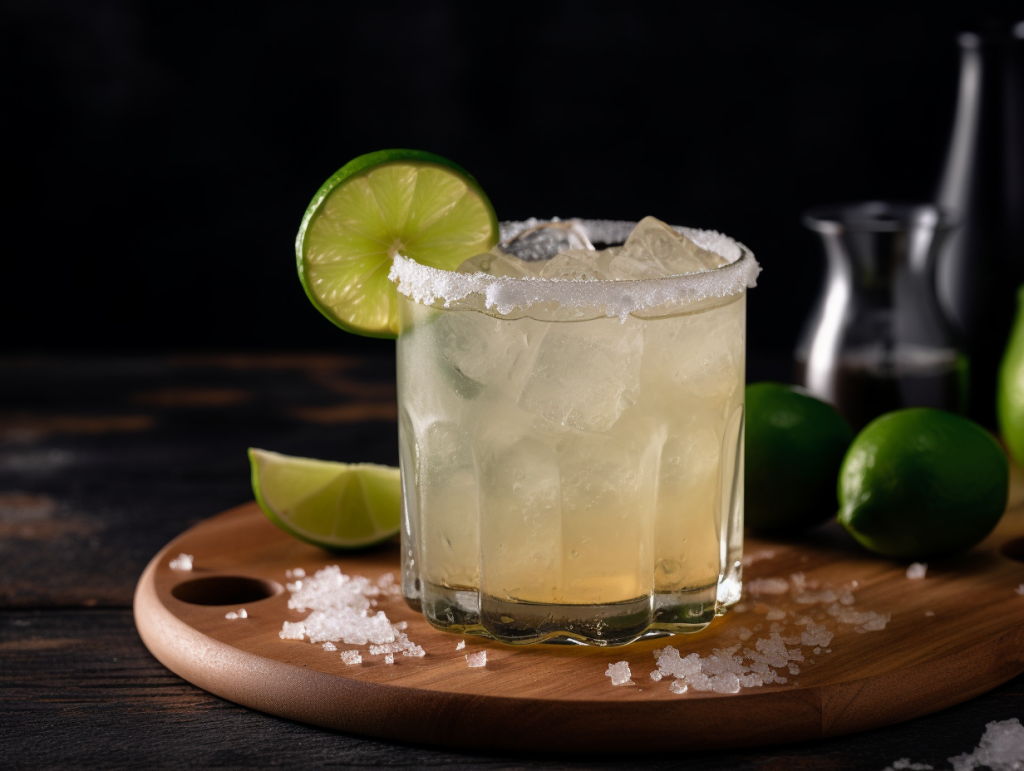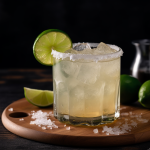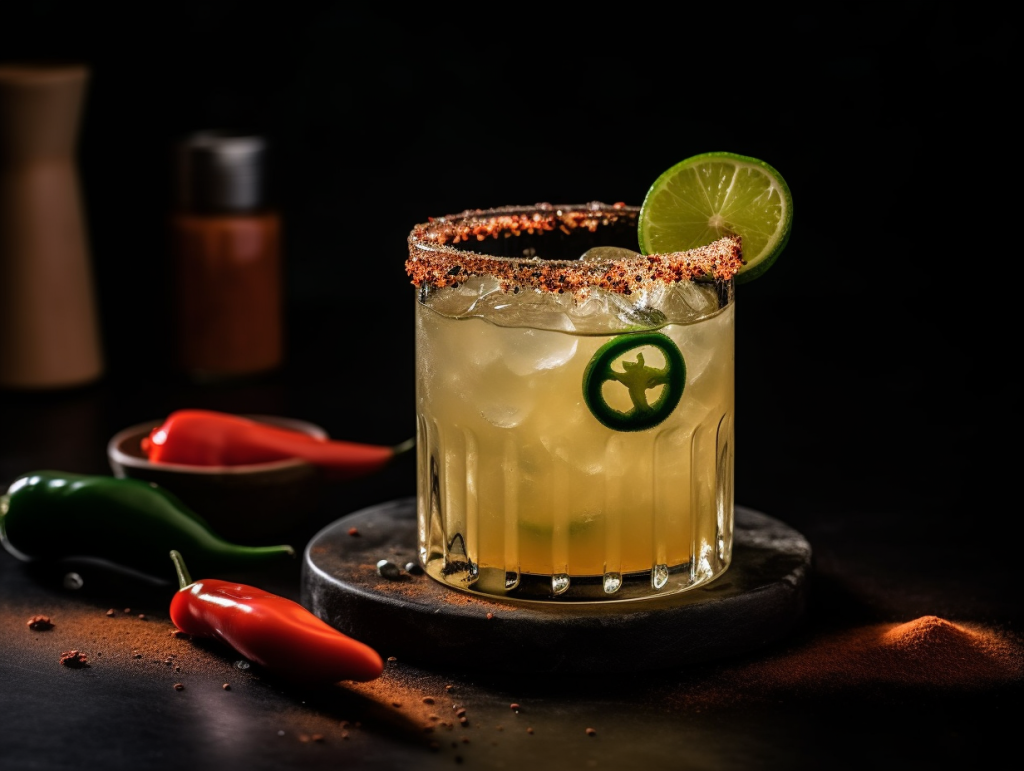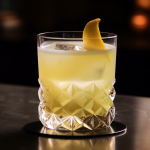Tommy’s Margarita stands out as a minimalist twist on the classic margarita recipe, celebrated for its simplicity and the pure flavor of its ingredients. Created by Julio Bermejo in the early 1990s at Tommy’s Mexican Restaurant in San Francisco, this variation is renowned for its use of agave nectar as a sweetener instead of the traditional orange-flavored liqueur. The cocktail is made with just three components: tequila, freshly squeezed lime juice, and agave nectar, which allows the high-quality tequila to shine through. Served on the rocks and often garnished with a lime wheel, Tommy’s Margarita offers a more agave-forward taste compared to the classic margarita.


Tommy’s Margarita
- Total Time: 5 minutes
- Yield: 1 cocktail 1x
Ingredients
- 2 oz Tequila (100% agave)
- 1 oz lime juice
- 1/2 oz agave nectar
- lime wedge and kosher salt (garnish and rim)
Instructions
- Mix the tequila, lime juice, and agave nectar in a shaker with ice and shake until cold.
- Moisten the rim of a rocks glass and dip one side of the rim in a dish with kosher salt.
- Fill the glass with ice and strain the margarita into the glass. Garnish with a lime wedge.
Notes
1 lime yields approximately 1 oz of lime juice
Smoky margarita: use a 1 oz Tequila, 1 oz smoky mezcal, and smoked sea salt on the rim.
Spicy margarita: muddle a jalapeño coin with the seeds removed in the shaker before mixing ingredients. Garnish with jalapeño coins and use chile & lime seasoning on the rim instead of salt.
Prickly Pear margarita: use prickly pear syrup instead of agave nectar.
- Prep Time: 5 minutes

The origin of Tommy’s Margarita is as intriguing as the drink itself. Julio Bermejo, at his family-owned restaurant, sought to create a Margarita that highlighted the agave flavor intrinsic to tequila, a spirit that was just beginning to see artisanal production methods that emphasized quality and terroir. By swapping out the triple sec or Cointreau typically used in classic Margaritas for agave nectar, Bermejo effectively made a cocktail that was not only smoother but also more authentically Mexican, celebrating the agave plant both as the source of tequila and as a sweetener.
Making a Tommy’s Margarita is straightforward, reflecting its philosophy of simplicity. Start by combining 2 ounces of high-quality blanco tequila, 1 ounce of fresh lime juice, and a half ounce of agave nectar in a shaker with ice. Shake well until the mixture is well chilled, then strain into a rocks glass filled with fresh ice. This process ensures that each of the few ingredients used melds perfectly, offering a balanced and refreshing drink.
The choice of tequila is critical in Tommy’s Margarita. A pure, 100% agave tequila is preferred to accentuate the flavors that the cocktail intends to celebrate. Blanco tequila, which is clear and typically unaged, carries the fresh, bright notes of agave, making it an ideal choice for this drink. The quality of the tequila directly influences the final taste of the cocktail, making it essential to choose a tequila that one would enjoy drinking neat.
In terms of sweetness, the use of agave nectar in Tommy’s Margarita provides a smoother, more natural-tasting sweetness than the syrups and liqueurs found in many other cocktails. Agave nectar complements the tequila instead of overshadowing it, enhancing the drink’s overall flavor profile without adding any unnecessary complexity. The amount of agave nectar can be adjusted based on personal preference for sweetness, allowing some customization in the recipe.
Tommy’s Margarita not only offers a delectable cocktail experience but also has a cultural significance. It represents a shift in how cocktails are perceived and made, emphasizing quality ingredients and artisanal spirits. This drink has not only become a staple on the menus of high-end cocktail bars around the world but also serves as an inspiration for modern mixologists to develop other minimalist cocktails that respect and highlight their primary ingredients.



